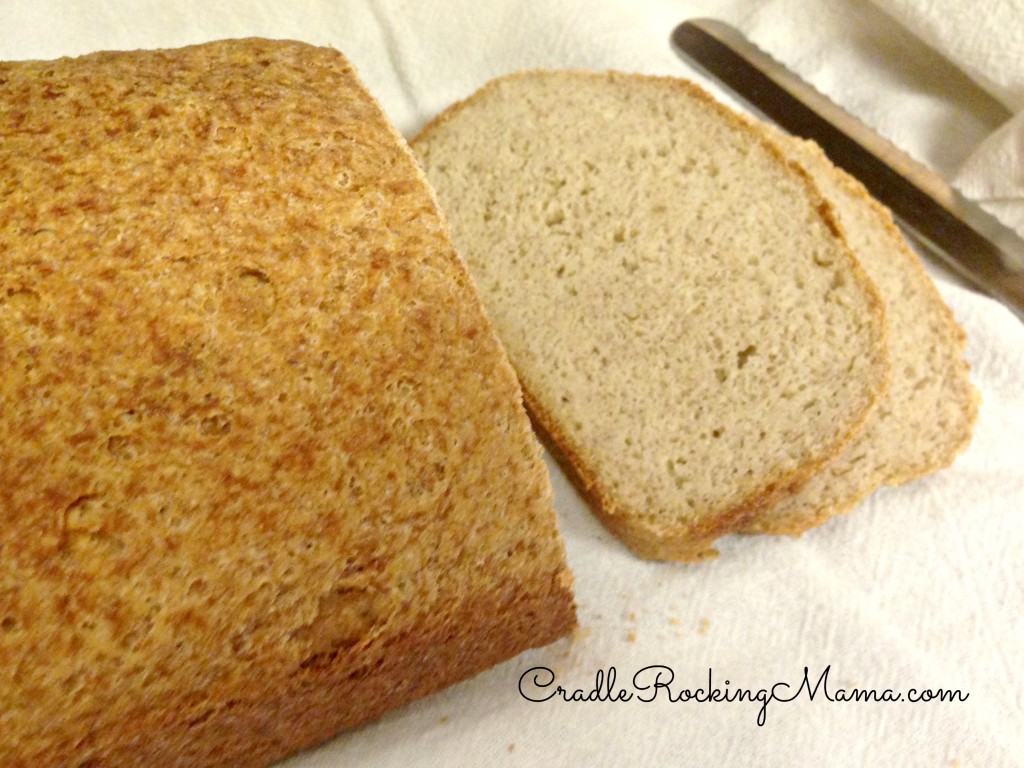
Browsing on Pinterest this week (a great activity to do while nursing, in case you didn’t know) I saw a “savings goal for 2014” thing that looked intriguing. Instantly I thought “now this is a great Frugal Friday tip!”
For some reason, though, when I sat down to write about it, my heart just wasn’t in it.
I couldn’t figure out why I suddenly had writer’s block, and then it came to me: we can talk about ways to not spend our money uselessly, we can talk about saving money via clever savings plans, we can discuss reusing things so we don’t have to buy new stuff, but all of that is really the icing on the frugality cake.
The actual frugal “cake” is a sound financial plan. Upon it rests all the other little tips and tricks that you might ever read – even from me.
Now, I’m not a trained financial planner. I’m not an accountant.
What I AM is a Mama that has, at 5 different points in my adult life, managed to achieve the goal of being 100% debt free, and have managed to keep my family financially afloat through some very harrowing financial times. So I’m not completely useless on the subject of money!
Full disclosure: after becoming debt free 5 times, one would imagine it would have STUCK and I could have stayed that way. Even savvy planners get sidelined by the unexpected, though…car wrecks that kept me out of work for 7 months, unexpected moving/marriage debt accrual, sick children and medical expenses too big to anticipate, etc. So, yeah…I’m still working on STAYING debt free. But getting there is something I’m VERY good at!
There are all sorts of fantastic resources out there for personal financial planning. Some have become so renowned that even those of us who haven’t utilized them know a few of their techniques (envelope method, anyone?)! With so many resources available, though, it can get a little overwhelming. Where do you start?
And if you pick a starting point and read the whole book, you can be terrified of the steps that are coming at the end of the journey; you can get overwhelmed before you even start.
So I thought I’d take the beginning of the year to refocus Frugal Friday for a very quick ‘clean up your financial house’ guide. A “Busy Mama’s Guide to Straightening Out the Checkbook”, if you will. Nothing overwhelming – just simple steps that you can take to make 2014 a little better for your family financially.
With hope, this will get you confident enough in your abilities that you can delve into more thorough research and think “I got this!” instead of “OM goodness I’ll NEVER be able to do that!”
So, let’s start!
The first thing to do when you want to get serious about your personal money is to find out where your money is at this exact moment in time. If you don’t know where you are, you can’t make a plan for where you want to go, and you can’t see which frugal tips will most help you!
So here’s the task:
Start with your set in stone bills. Get a pencil and paper (or a spreadsheet if you’re so inclined) and make a list of every place that requires you pay monthly. Think electric bill, water bill, phone bill, mortgage, etc.
In one column, write the name of the company, in the next column, write down how much you pay per month. If that amount is variable, put your best estimate in there (if it ranges from $150-250 per month, write down $200 for now).
Here’s an example:
| BILL |
AMOUNT PER MONTH |
|
| Electric |
$200 |
|
| Water |
$45 |
|
| Cell Phone |
$180 |
|
Now move on to your set in stone bills that come on a non-monthly schedule: car insurance, homeowners insurance, heating oil, car registration, etc. These are things you WILL have to pay, but since you don’t pay them monthly they can sneak up on you.
Skip a line, and start with your “annual expenses”, putting them in a third column – like this:
| BILL |
AMOUNT PER MONTH |
AMOUNT PER YEAR |
| Electric |
$200 |
|
| Water |
$45 |
|
| Cell Phone |
$180 |
|
|
|
|
| Car registration |
|
$65 |
| Car insurance |
|
$565 |
| Homeowners Insurance |
|
$1250 |
| Heating Oil |
|
$350 |
Now go back and tally things up! Start with your monthly expenses and just add those together. Add a line to that list that is titled “Annual Expenses” and leave the amount blank for now.
Then, go to your annual costs. Add those together, divide the total by 12, and now you have an amount to save monthly so you’ll never be caught scrambling to find the money to pay car insurance again! Add it to your monthly expenses like so:
| BILL |
AMOUNT PER MONTH |
AMOUNT PER YEAR |
| Electric |
$200 |
|
| Water |
$45 |
|
| Cell Phone |
$180 |
|
| Annual Expenses |
$186 |
|
| TOTAL |
$611 |
|
|
|
|
| Car registration |
|
$65 |
| Car insurance |
|
$565 |
| Homeowners Insurance |
|
$1250 |
| Heating Oil |
|
$350 |
| TOTAL |
|
$2230 |
So now, with our made-up numbers, it says we need $611 just to stay afloat.
Now we move on to variable things. This would be groceries, gas, entertainment, and general living expenses.
If you keep receipts, grab all your receipts for the last three months. Why three months? Because spending is a little out of whack for Christmas so November and December might not be the best examples of normal spending to extrapolate data from. Add October in, and you’ll start to get a better picture of your actual spending.
(Bonus: add up all the costs for gifts you gave at Christmas, divide by 12, and add that to your annual expenses amount. Now Christmas won’t ever break your budget again!)
If you don’t have receipts, grab your credit card statements and bank statements and you’ll at least be able to get a rough picture of where your money goes.
Using a format that makes sense to you, start writing down where your money goes. I’d suggest thinking in categories – but don’t stress too much over this! Personally, I get a little bogged down if I start breaking up our spending into too many categories.
Over the years, I’ve realized that I do best with a single category for “household spending”; it includes groceries, eating out (as if!), clothes, shoes, toiletries, and any other misc. ‘inside the house’ expenses. This gives me the flexibility in my budget to say “OK, I’m pretty stocked up on groceries this month; I can go blow $300 on books!” without feeling guilty or ‘running out of money’ in that category.
You, on the other hand, might be unmotivated by such an approach and actually need the structure of a “groceries”, “eating out”, “kids clothing”, “parents clothing”, “dry cleaning”, etc. categorical approach.
At this point, it’s all about what works for YOU and what makes sense to YOU. Just get the info down somehow, someway, so you can use it as we progress.
So make your columns (example below) and add up the last three months of expenses, divide by 3, and use that as your monthly amount.
| CATEGORY |
AMOUNT PER MONTH |
THREE MONTHS |
| Groceries |
$958 |
$850+$925+$1100 |
| Eating Out |
$50 |
$55+$60+$35 |
| Clothing |
$85 |
$89+$125+$40 |
| Gas in Cars |
$308 |
$260+$315+$350 |
| Dry Cleaning |
$56 |
$45+$58+$65 |
| TOTAL |
$1457 |
|
Obviously I’m TOTALLY making things up here. FPIES families will look at an “eating out” category and laugh, normal families will look at that “groceries” budget and cringe. I’m just throwing out examples here.
So now, put it all together!
| BILL |
AMOUNT PER MONTH |
AMOUNT PER YEAR |
| Electric |
$200 |
|
| Water |
$45 |
|
| Cell Phone |
$180 |
|
| Annual Expenses |
$186 |
|
| Living Expenses |
$1457 |
|
| TOTAL |
$2068 |
|
|
|
|
| Car registration |
|
$65 |
| Car insurance |
|
$565 |
| Homeowners Insurance |
|
$1250 |
| Heating Oil |
|
$350 |
| TOTAL |
|
$2230 |
| CATEGORY |
AMOUNT PER MONTH |
THREE MONTHS |
| Groceries |
$958 |
$850+$925+$1100 |
| Eating Out |
$50 |
$55+$60+$35 |
| Clothing |
$85 |
$89+$125+$40 |
| Gas in Cars |
$308 |
$260+$315+$350 |
| Dry Cleaning |
$56 |
$45+$58+$65 |
| TOTAL |
$1457 |
|
Using this example (that is totally made up – hey, I didn’t even include rent/mortgage in it, after all!) our fantasy family knows they need $2,068 per month just to break even on monthly expenses.
That’s enough for this week! Just sit down and take the half hour it will take you to put to paper exactly what your family costs to maintain per month. When you’re done, you’ll see much more clearly where money is being well-used and where it’s being sucked dry uselessly.
It might inspire you to make some big changes to your budget! Just SEEING the data so clearly often makes me feel motivated to change things!
If you feel you can make some changes without being overwhelmed, go for it!
If the thought of where to go next is disheartening, however, just put this to the side for now, and pat yourself on the back for taking the first step towards financial control.
Read the rest of the series:
Part Two: Organize Your Debt
Part Three: Make a Plan
Part Four: Focus on the Details
Part Five: Design Your Dream Life
Hope that helps!
How about you and your family? Do you have a financial plan or budget? Or is bill paying a total surprise to you each month? I’d love to hear your biggest financial challenge!
Like this:
Like Loading...





































